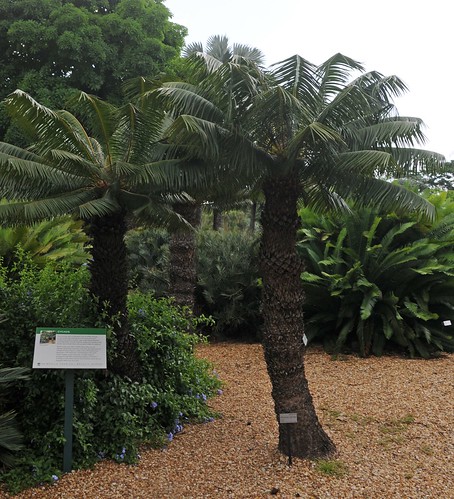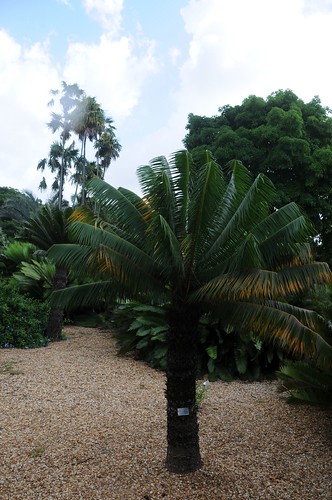Microcycas looks quite "palmy" hence its common name "Cork Palm"and grows very quickly (cycadwise) in the right conditions. It is also thanks to its restricted range rather rare. My favourite Microcycas tale relates to Castro (who like a number of dictators placed a fair bit of emphasis on saving his rare endemics) and the palm and cycad obsessed Dr. Toshihiko Satake of the Japanese Satake Group of rice and rice accessories fame. Satake donated a milling machine to Cuba and when asked if there was a gift he would like in return requested a Microcycas, being rewarded with 10 treasured plants from Fidel for his trouble which to this day are cared for by the company (along with an E. woodii(!) and some other cool stuff) and producing seeds. But if the government were so interested in it why is this plant so endangered (wikipedia gives a (probably excessively low) world population estimate of 600 plants)?

Well in part this is due to its very small range - Microcycas is limited to a small area of Western Cuba's Pinar del Rio province - but in part its due to the fabulous male cone above. Put simply, with a male to female ratio of 10:1 the world's population of Microcycas is what Stiffler would refer to as a sausage-fest. There just aren't that many seed-producing female plants out there.
What Microcyas does have in its favour is a strong conservation programme and captive population being managed to produce seeds. Whilst trade in this one is very restricted due to the limits on anything getting out of Cuba and its CITES appendix I status. Nonetheless occassional batches of extra seed crop up for auction from botanic gardens looking to get some cash and always go for big prices.


2 comments:
Very unique cycad!
Its a cool one isn't it FC?
Post a Comment